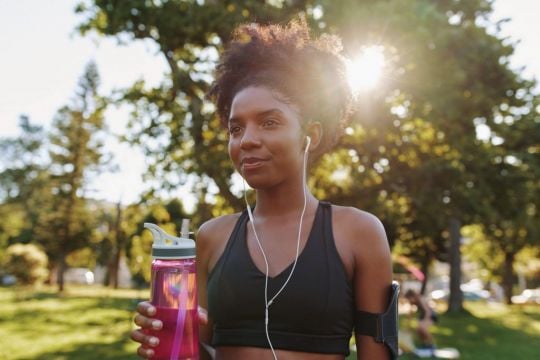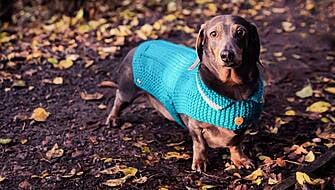Fallen in love with jogging? There’s no rule that says you have to build up distances and enter events. But if you do fancy a challenge, a half-marathon is often a runner’s first ‘big race’.
If you’ve smashed those 5ks and 10ks, taking the next leap to a half-marathon – 13.1 miles or 21.1km – can be quite a push! But runners of all shapes, sizes and speeds manage it, whether it’s for fundraising, fitness, personal goals or simply for the buzz.
It goes without saying, training is crucial, to build up distances and gradually get used to pounding the pavements for longer, and there are loads of training plans online. Recovery is vital too, which includes stretching, good sleep, magnesium salt baths, and perhaps a sports massage if your budget allows! What else might you want to think about?
Yes, your shoes really matter
“The most important thing for any runner is to get fitted properly for running shoes,” says Rasa Kavaliauskaite from Runners Need (runnersneed.com).
“It’s ok to see if you like running in the first place with basic shoes, but I would strongly advise if you are training for longer runs, to see any Runners Need specialist and get gait analysis. With this, we can see how your body biomechanically works and which shoe best suits you. Good running shoes will help avoid injuries and pains.”
Nutrition
Rob Hobson, head of nutrition at Healthspan, who recently qualified in sports nutrition too, says: “It pays to make sure your diet is healthy and balanced, including plenty of wholefoods, wholegrains, lean proteins, healthy fats, fruits and vegetables. ”
Carbs are king when it comes to training and endurance events, Hobson adds. “Glucose it the key source of fuel and this is stored as glycogen in the muscles and liver. It’s important to maintain good stores, which means eating enough carbs to replace what you’ve used, while also taking them on board while you are competing.

“As a guide, if you’re training moderately for around an hour daily, aim for about 5g per kg body weight – about 300g carbs for someone weighing 60kg. A few days before an event, try to increase and aim to double your intake (cutting back on fat and protein) to ensure max glycogen storage. Do this incrementally though, as you may only manage a certain amount if your gut doesn’t respond well.”
Protein is important for recovery, but Hobson says “most people eat more than enough. Your plate of food should be carb focused and then a smaller amount of protein (handful of chicken, Quorn, tofu, eggs, beans) alongside plenty of veggies and some healthy fats (olive oil, nuts, seeds, avocado).”
Hydration, hydration!
Hobson says “hydration is a key factor for performance”. The colour of your pee will indicate whether you are adequately hydrated – and don’t wait until you’re parched and your urine looks like Irn-Bru before reaching for that bottle. “If you are running in hot temperatures, you may want to take on board electrolytes which you can add to drinks – these add minerals such as sodium to replace losses through sweat. Try Healthspan Elite Activ Hydrate (£11.99 for 40 tablets),” suggests Hobson.
Race day fuelling
Number one rule? “Never try anything new on race day,” cautions Hobson. Many newbies have come a cropper here – trying energy products for the first time on race day, only to discover they really don’t agree with them! Experiment with how you tolerate portion sizes before longer runs too; some people are simply more comfortable and energised keeping things light (although Hobson says it’s important to refuel adequately afterwards).
“Stick to the same high carb breakfast and try to eat three to four hours before the race. Try not to eat too much fibre beforehand, as you want to eliminate any chance of gut upset. Same goes for fatty foods, so no fry-up! Just quick releasing carbs, a little protein and healthy fats: e.g. porridge with honey, nuts, seeds and berries.”
Energy gels and drinks can be a useful way to fuel during the half-marathon, he adds – “aim for around 60g of carbs per hour of running”.
Get niggles checked early
Nobody wants injuries to get in the way. So, if your knee, ankle or hip is giving you jip in training, “get it checked out as soon as possible,” says physiotherapist and clinical Pilates instructor Lyndsay Hirst. “I see too many runners that leave and leave it, until it starts to either snowball to cause other issues or causes them to have to stop running temporarily. The sooner it’s treated, the better.
“Some physiotherapists also offer assessments and advice to help prevent injury, by analysing movement/biomechanics and fixing abnormal movement patterns before they become an issue.”
Factor in strength training
It might feel like all the focus is on clocking up runs. However: “Strength training will help minimise risk of injury, correcting imbalances, improving muscle activation thus enhancing performance,” says Valentina Roffi from Sprint Physiotherapy. “A runner’s body is exposed to having to absorb and propel our bodyweight hundreds of times every minute. If it’s not prepared to take this, imbalances and compensations may develop, leading to injuries.
Calling all runners. We need 20 seconds of your time- that's all you need to watch this video @SprintPhysio @TheLondonTri @BlenheimTri @EnglandAthletic @OCR_UKOCR @ocrauk @SpartanRace pic.twitter.com/2bdnGH54wo
— SportsMedics LTD (@SportsMedics) May 13, 2020
“A strength programme should focus on form, muscle activation as well as load training that can be gradually progressed. A physiotherapist, running coach or personal trainer will be able to help set a programme according to specific needs.”
Do you need to adapt your kit?
On shorter runs, you can often get away with not carrying anything. But on a half-marathon, you need to think about how you’re going to carry any gels/snacks etc and your water – especially as many events are cutting down on single-use plastic bottles.
“Some runners like to run with handheld bottles, and there are many different types: hard and soft,” says Kavaliauskaite. “With hard bottles, you will have to keep them through the run. Soft ones are foldable and if you have a pocket, you can just store it. The other option is to use a small hydration vest or rucksack. Some runners do like to run with nothing in their hands, and it’s easier to sip from the tube. Just see what works best for you.”







